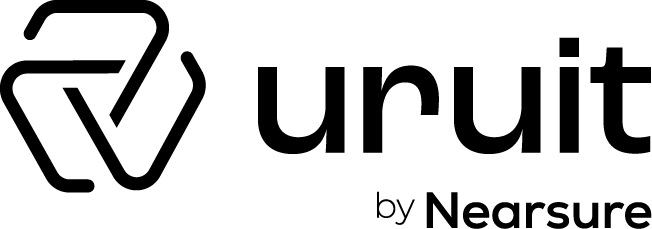Contents
Design Thinking: benefits, experience & practical guide
Design is currently going through a process of revolution. Design thinking is a process that changes from time to time, experiencing steady growth. The growth comes with more fantastic ideas on how designing goods, services, strategies, and strategic initiatives can become better.
Why do designers employ creative design thinking?
The main reason designers incorporate the process of design thinking is to find a way to counter the major challenges in business. The end goal is always to provide satisfactory solutions to their clients, which is not possible with challenges in business.
Design thinking offers creativity, insight, and systematic thinking to identify the main challenges, how they affect business, and how to get business outcomes that will be highly beneficial to the customer.
The long and illustrious history of design thinking
For most people, design thinking was developed only recently. While this is not the case, most developments we see today, including monuments, bridges, vehicles, and subway systems, some of which have been in place for the longest time, result from design thinking.
Design thinking is user-centric and goes hand in hand with user experience. It focuses on putting the needs of human beings at the forefront by understanding their needs and coming up with solutions that are effective to help satisfy those needs.
What is the difference between solution-based and problem-based thinking?
Solution-based thinking focuses more on finding solutions. It focuses significantly on coming up with something constructive that is not only meant to solve the problem for that period but offers long-term solutions. On the other hand, problem-based thinking is more fixed on obstacles and limitations standing in the way of business success.
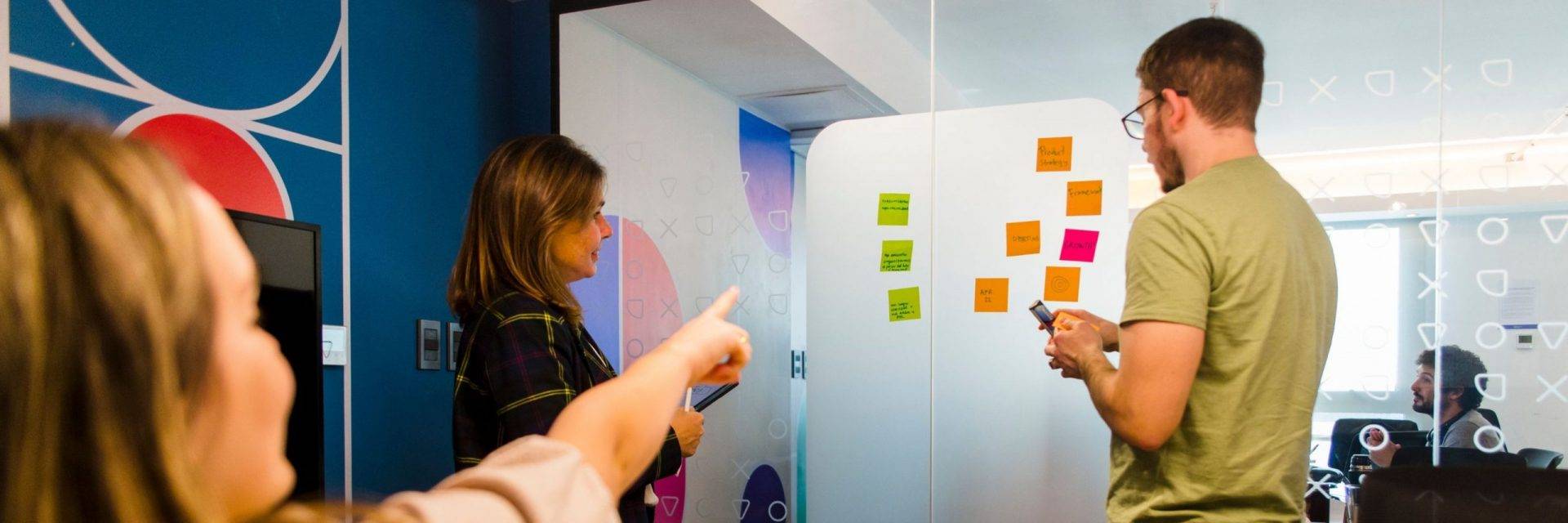
What is the process of design thinking?
The initial discussion is that design thinking and user experience go hand in hand. The four principles of design thinking include;
1. The human rule
Design thinking does not regard the kind of context. It is highly social. As design thinking focuses more on social innovation, it will take us back to the human-centric aspect.
2. The ambiguity rule
Ambiguity, otherwise known as vagueness, is inevitable. Its nature cannot change or be made simpler. In this case, design-thinking pushes you to your limits allowing you to experiment with your knowledge so you can see things clearly and differently.
3. The redesign rule
Any type of design is a redesign. Technology and social circumstances will continue to evolve with time. Basic human needs, on the other hand, are unchanged. Redesigning, therefore, means getting to the point of being able to satisfy these human needs.
4. The tangibility rule
Your designers can communicate more effectively when you make your ideas more tangible.
Six Phases Of Design Thinking
You can break down the design thinking process into five phases due to the four basic rules. They include;
Phase 1: Empathise
Without empathy, there is no critical foundation to design thinking. You must first want to know who your users are and what their needs are. In addition to that, get to know their objectives and their wants.
This phase involves a lot of interaction with people who are best placed to speak about their specific needs. As a designer, you will need to put aside your assumptions on how these needs can be met and be more realistic.
Phase 2: Define
The second stage of the design-thinking process focuses on defining what the problem is precise. You ought to have been quite thorough with phase one to get through this second phase.
You cannot identify the real problem without understanding what the people say they need. It helps you understand the gaps that need to be filled.
If you were keen on phase one, you are now best placed to address the challenges and the barriers your users face. Is there a vast and specific user problem that you and your team need to prioritize and address?
Once you have identified the problem, you can develop a clear problem statement which is the first step in finding a fundamental solution.
Phase 3: Ideate
You already have a clear picture of what the problem is and have already gone ahead to deliberate on it with your team. Come up with potential solutions that you feel will ultimately address the user’s needs. In this phase, you will need to use a lot of creativity.
Examples of ideating you can use to develop solutions include brainstorming, mind-mapping, body storming, and provocation. As you come to the end of the ideation process, ensure you have penned down a few ideas you feel are good enough to take you into the next phase.
Phase 4: Prototype
There is more work in this phase because you need to turn the ideas you came with from the ideation phase into tangible solutions for the user. To prototype means to bring all the ideas and potential solutions identified in the previous phases into tangible solutions.
Here is what to expect from the potential solutions you bring forward. They can be accepted, improved, redesigned, or rejected. The type of reaction you get to the proposed solution depends on how well the solution will address the user’s needs.
Phase 5: Test
From the reactions you have received to your presented solutions in the previous phase, you can begin to test the already approved solutions. While this may look like the end of the design-thinking process, there is a high likelihood that you will go back to the previous phase severally.
A few questions you can ask yourself in this phase include;
- Does this approved solution address the needs of the users?
- Has this solution made a difference in how the users have been feeling?
Phase 6: Learn and practice
At this point, you have already come up with tangible solutions and even shared them with your users. You need to get feedback on whether these solutions have made any difference or had an impact. User feedback is the only way to know if there was an essential design-thinking step you may have missed and need to look at again.
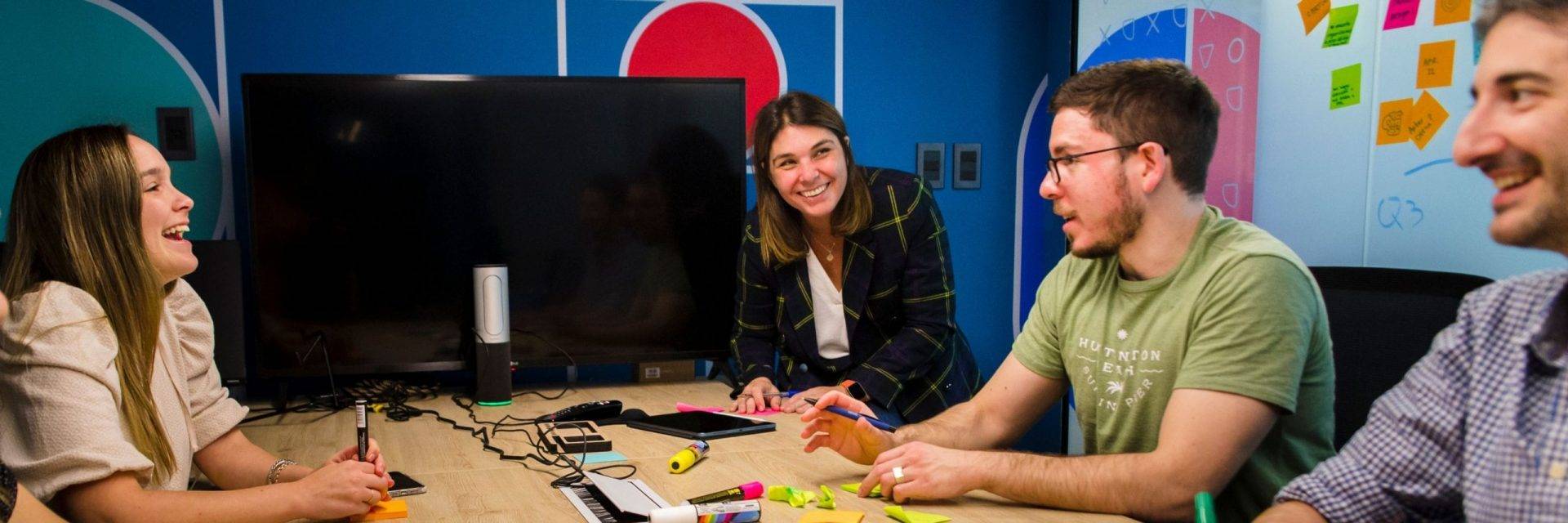
What is the purpose of design thinking?
By now, you already know how design thinking works. It is also essential to know why it is essential, especially for your business.
1. Design thinking fosters creativity and innovation.
As human beings, we will mostly rely on the knowledge we have gathered along the way and the experiences we have had to make informed decisions. While the patterns and habits we form can be useful in some situations, they will not always assist when we need quick solutions to problems.
Design thinking is rather important in getting us out of our comfort zones. It helps us look for alternative solutions and not just stick around with one possible solution. The design thinking process is open to challenges and obstacles that stand in the way.
That is why it is useful for businesses willing to make a difference, as it gives you the push not only to look for alternative solutions but also solutions that will resolve your users’ issues.
In many cases, the design thinking process is more of a middle ground. You cannot solve it if you have not had time for this process.
2. It aims to solve a concrete human need.
As mentioned earlier, design thinking is a customer-centric process that aims to uncover all challenges your end-user is experiencing.
The consumer is not aware of some of these challenges, which is why the process is essential in helping to unmask them. Design thinking, in this case, only needs to identify the problem. You will find a solution from that point.
3. Tackles problems that are difficult to define
In many cases, customers are unaware of the problems they are going through. It is even worse when they cannot even talk about these problems, making it difficult to start working on a possible solution. Design thinking is a great process that prioritizes the aspect of observation.
Careful observation, therefore, leads to a better understanding of the source of the problem and the problem itself. Sometimes, it is all about what you see from your user’s behavior that will help you identify the real problem. Eventually, solutions will begin to take the surface, and you can work with whatever you feel will ultimately address the need of your consumers.
4. It Helps organizations run faster and efficiently.
Without the design thinking process, finding a solution to address the main concerns of your consumer can take a long time. The results are apparent. You may start losing important business. To avoid this, incorporate the process of design thinking by bringing in prototypes and eventually testing them to find out or not they are viable solutions.
What industries can benefit from design thinking?
Health care and medicine
The design thinking process tends to touch on every area of human lives, and health care is not an exception. Medics embrace this process to make more impact on the patients’ lives by ensuring that they go through a more pleasant healing process.
While this is undoubtedly true, most hospitals have stopped looking at patients as their way out of getting more money. Initially, medical facilities would even let their patients get into health programs that were not related to their medical history, only to make more money from them.
When it comes to healthcare, medics are now using the design thinking process to promote empathy and to help the patients feel comfortable and assured that they are indeed cared for. There is an evident rise in trust in healthcare facilities, causing a disruptive change that is more beneficial to the patient.
Design thinking is a process that is a constant reminder that patient treatment is not enough empathy. Providing a comfortable space and a platform for interaction makes the healing process more enjoyable.
Public sector
Today, most governments are turning to design thinking to help with processes like policymaking. The main goal of design thinking in the public sector is to help you equip yourself with innovative approaches and those that will help you face challenges directly related to economic, social, and environmental patterns.
A few countries reaping the great fruits of design thinking include Denmark, Finland, Estonia, France, Latvia, and Ireland.
Space Exploration
The topic of space exploration causes excitement for so many people. Space exploration mainly helps to test our possible human abilities, so we can go beyond our comfort zones.
When facing challenges in the space exploration industry, design thinking helps to give creativity, critical thinking, perseverance, and other important skills that will help you survive in this industry.
Education sector
Design thinking is instrumental in the education sector by helping connect your creativity and aspirations. It also helps sharpen your already existing skills to help you comfortably fit in different fields in the education sector.
Four essential modes that teachers in school focus on include challenging assumptions, leading with empathy making experiments happen, and sharing any type of progress they see with creativity.
Design thinking is not possible in this sector with the absence of empathy. The process does not thrive in loneliness and isolation, so teachers need to share with students the progress they can see with the innovative solutions they come up with.
The world of retail
Before deciding on the importance of coming up with a product, think about the product’s end-user. Will it be beneficial to them, and is there a specific need that will meet with the availability of this product?
Indulging in story-telling is part of the design thinking process that helps to keep the consumers of your end products engaged. You are physically connected when the customer makes way to your shop so they can access the product. There is also an emotional connection that helps the customer remember you anytime they need that which your product can only fulfill.
Food and beverage industry
Design thinking in the food industry has proven to work some magic for some companies in sinking ships. A good example is PepsiCo. Had it not been for the creativity of Indra Nooyi, who incorporated the design thinking process to help save this organization from going downhill and probably going extinct, it would be a different story today.
Design thinking helped Pepsi focus on innovations trying to capture everything that felt like it would appeal to their customer. Sales at this time went up to 80 percent. Design thinking has also helped Pepsi reclaim its usual top position in the competitive market while they have also become an inspiration to other organizations.
The process of design thinking in the food and beverage industry promotes a personalized customer experience.
Entertainment
Due to design thinking, companies like Amazon and Netflix have gotten themselves to great heights in online and video streaming. The audience can watch their favorite shows in the comfort of their preferred locations.
A few years ago, none of this was possible. You had to have cable-dependent equipment so you could watch videos online. Design thinking has become dramatically beneficial for companies by revolutionizing the end-user’s experience.
The tech industry
‘Good design is good business’ are Thomas John Watson’s very words, who has experienced the benefits of design thinking firsthand.
In the tech industry, design thinking is helping companies solve end-user problems more tangibly. Most customers today are looking for organizations that will open new experiences, enrich them personally, and build their knowledge skills.
With design thinking, tech companies will maintain a significant stock market.
The automotive sector
Very few companies in the automotive industry can match the efforts of Elon Musk and Tesla Motors. Design thinking has helped these two come up with innovative and big, bold, extraordinary ideas that have brought a significant shift in the industry. This is how design thinking and user experience go hand in hand.
The process of design thinking will help increase your organization’s sales, but you will also have a more significant competitive advantage. What you need to understand in the automotive sector is that design thinking is not limited to the look and feel of your products.
These are, of course, very important in keeping you and the end-user connected, it gives your product longer life. Remember, your consumer is looking for products with an excellent longevity feature.
The banking industry
The financial sector does not solely rely on progressive problem-solving. Many great banks today have incorporated the design thinking process in recent years. The Bank of America is an excellent example of a bank that benefited greatly from the use of design thinking.
They obtained thousands of new customers while still retaining those with them already. Design thinking has enabled banks to develop innovative features such as quick transactions through mobile phone applications.
Travel and hospitality sector
If you have been keen enough, there has been a remarkable rise in Air BnB. Company sales in this industry had made a significant decline. Design thinking UX has come in handy to help travel industries that are going down due to poor customer experience and not being able to meet the consumer’s needs.
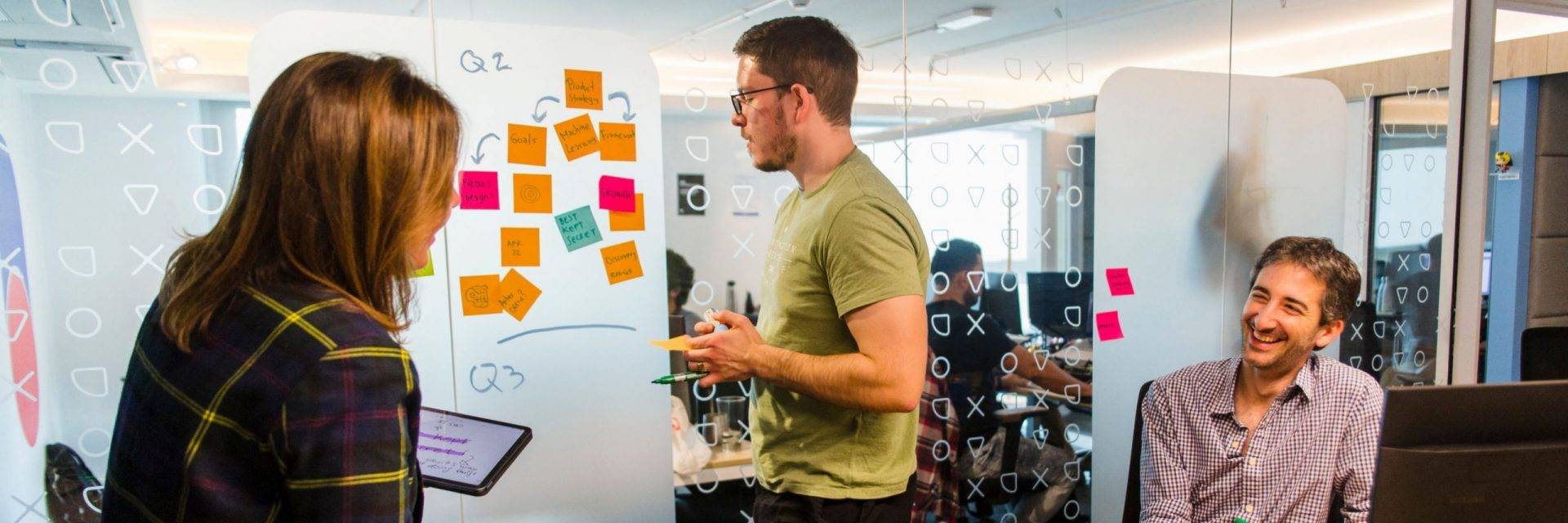
How design thinking, lean and agile work together
There is already so much you know about the design thinking process. The next step is to find out how it fits in the product design process.
Have you heard of the terms lean and agile? In design UX, more light is shed on how product design process, lean and agile work together for the better of your organization.
Lean and agile are processes intended to streamline the process of design thinking completely. Some benefits of being lean and elegant in your organization would include;
- Increased cross-functional collaboration between design, engineers, and product managers
- Quick gathering of feedback which also helps to implement solutions fast
- Delivering fast solutions regardless of lateness in making decisions.
- Strong emphasis on great cohesiveness when the team works as a whole
Combining design thinking with lean and agile
In many instances, design thinking, lean and agile, are seen as different approaches, working separately. The central question companies will ask themselves is whether to use lean, agile, or design thinking to develop solutions for various problems being faced by consumers.
Once you identify a suitable solution to the problem beforehand, you can start by incorporating the lean process. Lean principles allow you to test your ideas while gathering quick and ongoing feedback.
On the other hand, Agile ties the ideas and information into quick and short cycles. Agile’s main intention is to deliver value beneficial to both you as the organization and the end-user.
So how do design thinking, agile and lean work together for the organization’s good? These three processes combined eliminate unnecessary procedures while leveraging the contribution of all key stakeholders.
What are the main benefits of design thinking at the workplace?
As the organization’s designer, you have the main role to play: shaping the products and services that your company brings to the market. Suppose you incorporate design thinking in all these. In that case, you will be adding significant value to the end-user while allowing the organization to benefit from the relationships built with the customers.
Here are a few advantages of incorporating design thinking in your workplace
Reduction of time-to-market
Design thinking emphasizes focusing on solving the main challenges experienced by the consumers of your products. It is an important aspect that saves on the time used to develop products. This time is used to offer more value to the end-user.
Cost-saving and a great ROI
If you can get your products to move at a fast pace in the market, you can rest assured that your business will grow in terms of Return on Investment.
Improving customer retention and loyalty
What is a business without th availability of the customer? Design thinking is a customer-centric process, and the more you apply it in your organization, the better the relationships you build with your customers will get.
Fosters innovation
Design thinking is a process that gets you out of your comfort zone, helping you think outside the box. Besides coming up with solutions to help address your consumer’s issues, design thinking empowers you, helping you come up with powerful innovations that are there to stay and bring great changes to the organization.
Can be applied company-wide
Design thinking is not a process limited to designers only. It allows for joint effort while fostering cross-team collaboration. It even becomes better when you can virtually incorporate the ideas from this process.
It helps you understand your users.
Design thinking allows you to focus more on understanding your consumer’s attitude. This way, you know who to target while availing your products and solutions to them.
It encourages flexibility
Design thinking is non-linear. It helps you manage and coordinate multiple processes simultaneously. In the process, you get the best solutions available that aid in the assistance of your customers.
It is fast
How long the process will take is entirely up to you. Design thinking is a form of the booster.
What is the relationship between design thinking and UX design?
You can already see the significant similarities between design thinking and UX. The question that may be coming to mind is how the two correlate or collaboratively work together to help in moving the organization forward while offering solid solutions to your end-user
The significant similarity between these two processes is that they are both user-centric. That is, the primary focus is solely on the end-user. While they share these few similarities, a significant difference exists between these two processes. Design thinking is a process mainly used on a strategic level.
Most of its focus is on finding a solution that will address the end-user’s problem. Design thinking is not only used by people in design. Still, it is open to people in different departments, allowing for cross-functional discussions that help implement the solution quickly.
Suppose the work of design thinking is to find the solution. In that case, UX design designs are the key to making them tangible, usable, accessible, and, most importantly, pleasing to the end-user.
Suppose your organization focuses majorly on user design. In that case, you now understand that it is an essential process that you must rely on to create solutions that will be beneficial to the end-user.
Here is a tip to remember on user design. Try and avoid designing something with too much content that will be difficult to comprehend. Also, avoid cramming so much information and only stick with the solid basics.
If you cannot identify the main problem or feature of the design, it may be a sign that you are trying too hard. Instead, pick an issue or two and focus on designing solutions to address those two.
Another second helpful tip is this; Use a lot of observation with your user experience. A lot of participation with your end-user will quickly help you tap into the main issue, helping you quickly start formulating a solution.
Design thinking is a breakthrough for many businesses willing to give it a try. However, it does not mean that it will be all rosy. There are a few challenges you will experience with this process that include;
It requires heavy involvement from user participation.
The entire project phase of design thinking requires the participation of every single user. There are stages like initial researching, interviewing, co-developing the ideas, testing, and prototype.
If any of these stages lack end-user participation, design thinking ceases to offer the benefits to the consumer as you can find no solutions with a broken process.
Understand that this participation is not just an hour or a week but a full-time commitment to allow for a seamless flow of the processes.
The project duration is longer.
The prolonged time comes from the same processes that include interviewing, synthesizing, and testing the real users. The process also desires a useful outcome that will be highly beneficial to the user, so there is a need to keep interacting and revisiting the ideas.
Neglecting other users who are part of the solution
The primary focus of design thinking is to make the lives of the end-users better and simpler. These are the users meant to directly interact with your ideas and solutions while sharing their experiences along the way.
In a quest to satisfy these direct users, you will find that the design process neglects potential end-users who will eventually become a part of the ecosystem.
You may neglect the unhappy flow.
While the team mainly focuses on coming up with the idea that will be part of the solution, it may so happen that you may neglect the fact that the solution will not entirely work out.
There are system limitations to be considered.
You need to understand that most of the time, you will be using systems to configure information in design thinking. The feedback you get from the end-user is information you collect and put together.
What happens when the systems fail before you finish with the configuration? High chances are you will not be able to develop a solution because the information collected serves as a basis for helping you implement the helpful solutions.
Design thinking is more viable in a less limited environment, an environment that allows creativity and innovations. If your background is completely compatible with the design thinking process, you can rest assured that the outcomes you will get are meaningful and very pleasing to the end-user.

Conclusion
The design thinking process can be both simple and complicated. Over the years, the process has done wonders for businesses because it is customer-centric in nature. It is a process that focuses mainly on listening to customers or end-users of your products. In the process, you learn the exact challenges the end-users are facing and come up with possible solutions that can elate the end-ser.
However, this same process can be very complicated if there are gaps in between. As a designer alone, you cannot come up with or design proper solutions. You need the assistance of your team. With your heads together, you can speed up the process of innovation and allow for faster solutions.
